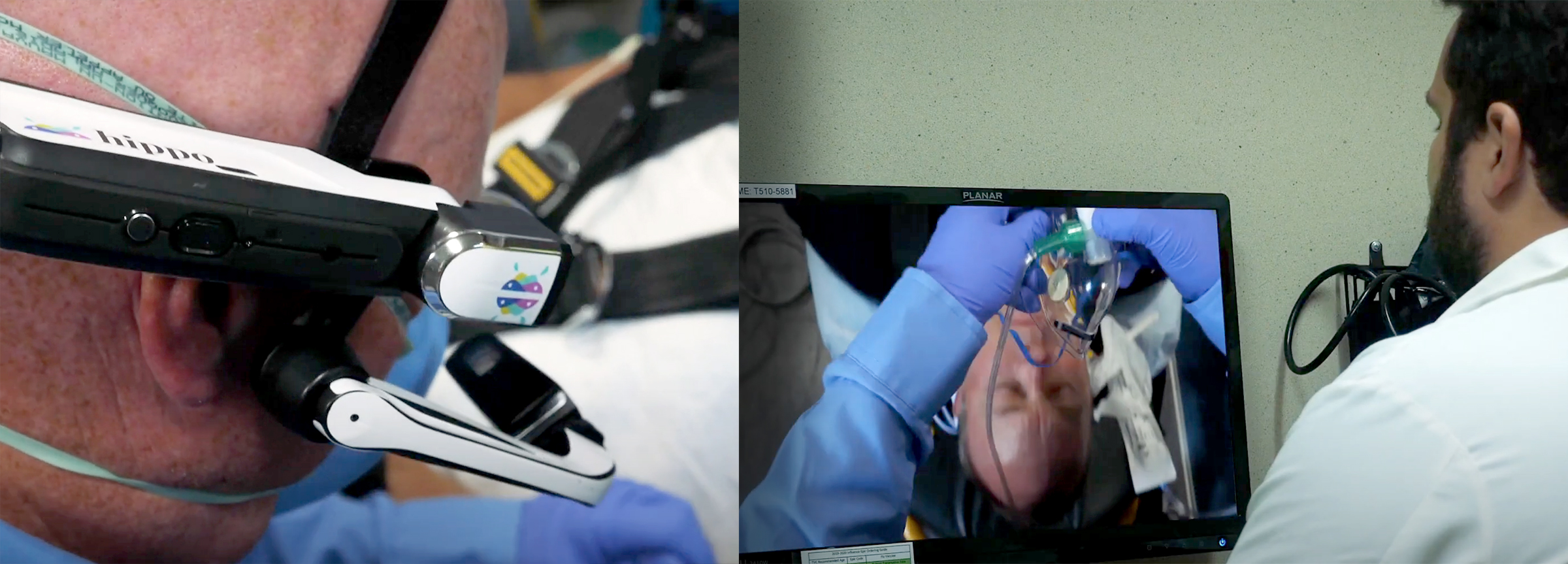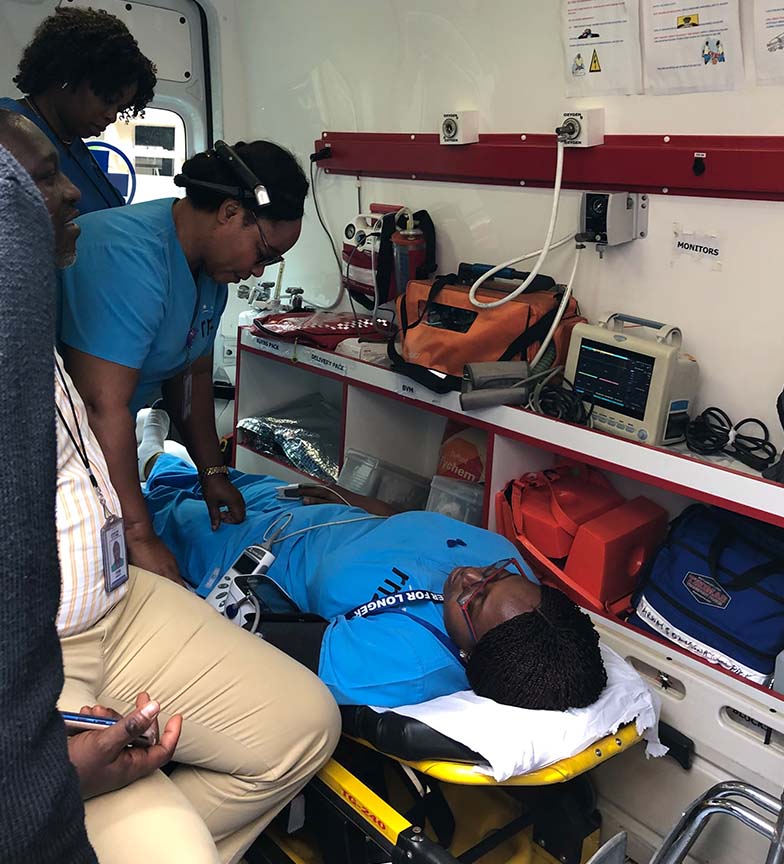How 5G will super-charge healthcare, innovation in medical tech
TELUS is primed to lead the change with ambitious 5G strategies in place that promise to radically improve how we take care of our health and connect with healthcare providers.
When you consider 5G, most people automatically think of smartphones but there is a new evolution in 5G which is being delivered via wearable computing. Healthcare promises to be one of the biggest industries impacted by this next generation of mobile networks. After all, 5G promises to radically impact patient care by revolutionizing health tech and enabling real-time communications with physicians and medical experts wherever we may be across the country.
The COVID-19 pandemic has shown that existing healthcare systems can be fragile. Medical resources are limited, especially doctors’ time. Coupled with restrictions on in-person appointments, we’ve seen a massive shift to remote check-ups through virtual healthcare. Although virtual healthcare is available now, it’s also an area that 5G can super-charge.
Faster speeds and lower latency can make virtual appointments more seamless, with higher quality video and less delay between participants. Moreover, virtual care and 5G can help overcome geography, another limiting factor for healthcare, by making proximity to medical facilities less important. As for remote patient monitoring, 5G will help power real-time analytics to track metrics on patient health and well-being.“When I think about 5G,” said Brandon Walker, TELUS’ strategic program director of IoT, “it’s really about providing Canadians with faster, secure connections for virtual care visits with clinicians and to enable things like remote patient monitoring.”
Virtual care is more than just video consultations and check-ups – it can also include surgeries using smart glasses and other innovations. The ones developed by Hippo Technologies, for instance, use hands-free wearable computers and cameras to relay what the wearer sees and allow them to communicate with remote observers all in real-time supported with the highest level of compliance standards.
“Hippo’s virtual care headsets provide a you-are-there experience for the remote observer, which is unlike the traditional telehealth solutions that exist today,” said Dr. Pat Quinlan, Hippo Technologies CEO and co-founder. He compared smart glasses to other solutions, like using tablets or screens for video, noting “mobile phones and tablets don’t deliver the first-person perspective that a clinician needs.”

Caregivers and physicians in rural clinics are supported by specialist physicians from major medical centers.
Quinlan added that “past limitations on geography and timing and training… have been largely eliminated when virtual care is properly used.” As new technologies and tools emerge, people will discover new ways to use them and we’ll see those benefits in health.
Expanding healthcare to more places with 5G
5G can help connect rural or remote communities that may be difficult to connect with fibre. Coupled with the lower latency offered by 5G networks, rural communities will benefit from near real-time, virtual care similar to how rural classrooms could benefit from real-time, virtual education.
People who don’t live near medical facilities will be able to have virtual appointments with specialists that traditionally may have been unavailable to them due to geography. Similarly, an Emergency Medical Technician (EMT) could arrive on scene wearing one of Hippo’s headsets and connect in real-time with a team of specialists that can see what’s happening and offer life-saving advice and guidance.

EMTs on scene are supported in real time by medical staff.
Through low-latency 5G, care professionals could tap into the knowledge and experience of experts in various fields, no matter where those experts are.
“I think it’s actually the right time for 5G when it comes to healthcare because Canada is facing a really significant challenge with our ageing population that will increase demands on the system, while at the same time shrinking the pool of available skilled workers,” said Walker.
Connecting hospitals to improve care
Walker pointed to the connected hospital as another example of how 5G could benefit healthcare.
“Within the connected hospital, you have all manner of things that may or may not be connected today,” Walker explained.
“I think what we’re really trying to advance when it comes to the connected hospital is we want to enable real-time location systems or services… [to] leverage the data that is coming from people, places, things so you can orchestrate workflows much more efficiently.”
Quinlan echoed the sentiment, noting “virtual care comes in and you manage people [in] real time, more frequently, more appropriately, while at the same time working with individuals to change their behaviours, to change the course of their disease and their risk for disease.”
Walker added that leveraging 5G to power connected technology in hospitals includes a significant security element since carrier networks leverage licensed spectrum, while Wi-Fi operates on unlicensed spectrum that’s available to anyone.
Current tech works on current networks, but 5G offers more potential
It’s important to keep in mind that 5G is still relatively new. “There’s no light switch that gets flipped for 5G,” said Walker. “What I see as interesting is the interplay we will see happen between the availability of spectrum network investments from companies like TELUS, as well as innovation happening in the tech sector that will truly bring 5G to life for Canadians.”
Quinlan’s Hippo virtual care solution is a great example of the crossover point where we are now. Hippo’s smart glasses technology works with existing networks at 3G and 4G speeds, for example. Part of the journey of 5G will be seeing how companies like Hippo push existing technologies further or create entirely new experiences tailored to 5G.
“We needed to pressure test [the technology] and make sure that whatever we used was reliable,” Quinlan said when explaining the first deployment of Hippo’s smart glasses tech. He detailed the initial test of Hippo technology in Nigeria, noting that Hippo picked Nigeria due to the difficulty of implementing the technology in what Quinlan described as a “low 3G environment.”

Medical staff in Nigeria successfully testing the Hippo HMT-1 headsets in the field.
After a successful first test in Nigeria, Hippo brought the technology to other places for both education and clinical care, including Barry University, Adtalem and many others. When asked about future Canadian deployments, Quinlan expressed excitement about various projects Hippo was working on, but wasn’t able to provide specifics due to agreements with partner companies.





